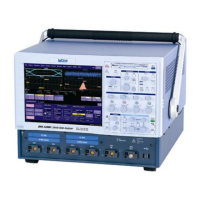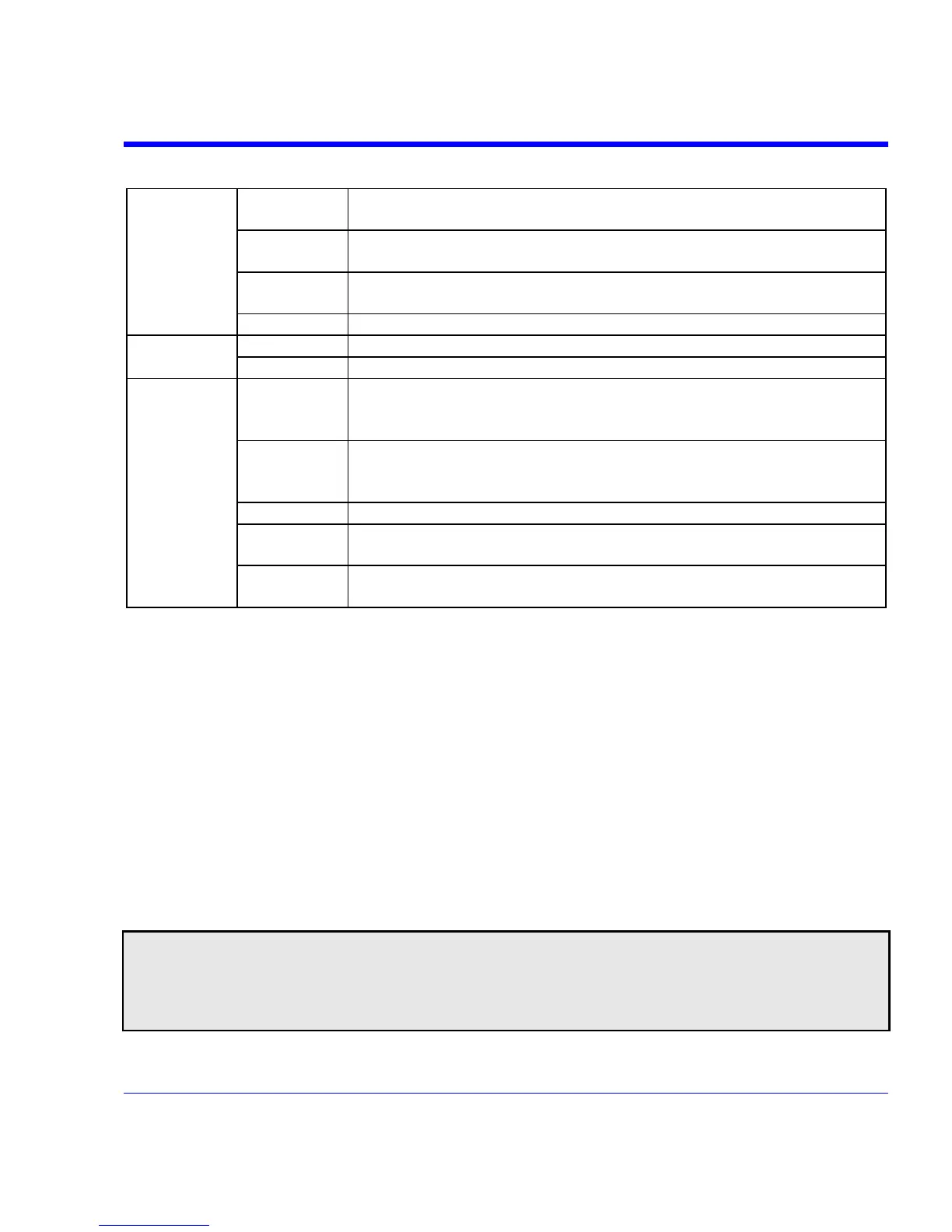SDA Operator’s Manual
SDA-OM-E Rev H 319
The measurements made for each parameter set are as follows:
Amplitude
ehght(Eye) Size of the vertical opening of the eye diagram. This parameter is
defined as: (mean ones level - 3) - (mean zero level + 3)
one(Eye) Logic one level of an eye diagram. This is the mean value of the one
(high) state.
zero(Eye) Logic zero level of an eye diagram. This is the mean value of the
zero (low) state.
eampl(Eye) Difference between the mean one and zero levels of an eye diagram
Timing
rise Transition time from 20% to 80% for a rising edge
fall Transition time from 80% to 20% of a falling edge
Eye
ewdth(Eye) Size of the horizontal opening of an eye diagram, minus 3 sigma on
each side, where sigma is the
standard deviation of the jitter.
ER(Eye) Ratio of the optical power levels in an eye diagram (extinction ratio),
defined as log(p1/p0), where p1 is the power level for a "1" and p0 is
the level of a "0" level.
eyeBER(Eye) Bit Error Rate estimated from an eye diagram
ecross(Eye) Level of the zero crossings in an eye diagram as a percentage of the
eye amplitude
avgpwr(Eye) Average power level of a waveform. This is computed as the
average of the sum of the ones and zeroes levels.
7. If you selected Amplitude or Eye, touch inside the Slice Width [The slice width is a
percentage of the duration of a single bit, i.e., the part of the pattern over which the extinction
ratio is measured. By setting a percentage value, you indicate how much of the central
portion of the bit width to use. Slice width is marked by the dashed vertical lines on the
display.] field and enter a value from 0 to 100%.
Mask Margin
1. Touch inside the X field and enter a value from 0 to 100%. As you enlarge the mask's X
margin, you lengthen the horizontal dimension, bringing the mask closer to your waveform.
Consequently, you will have more failures.
2. Touch inside the Y field and enter a value from 0 to 100%. As you enlarge the mask's Y
margin, you widen the vertical dimension, bringing the mask closer to your waveform.
Consequently, you will have more failures.
3. Touch the Vertical Auto fit checkbox if you want to scale the eye pattern.
Note: The vertical autofit function sets the scaling of the eye pattern so that the one level is at the second vertical division
above center, and the zero level is at the second division below center. The Vertical Auto fit checkbox is automatically
checked or unchecked depending on the Signal Type that you selected. For example, when an absolute mask like XAUI is
selected, the Vertical Auto fit box is unchecked; but, it is checked for a normalized mask like FC1063.
Scaling for absolute mask signals is accomplished by setting the vertical scale of the input signal.

